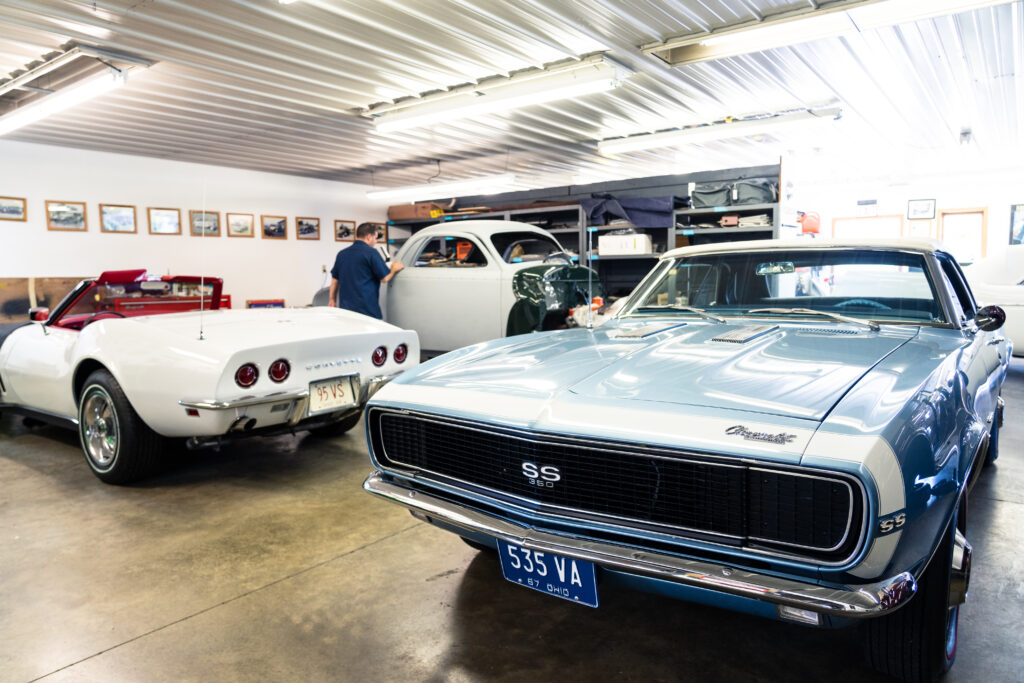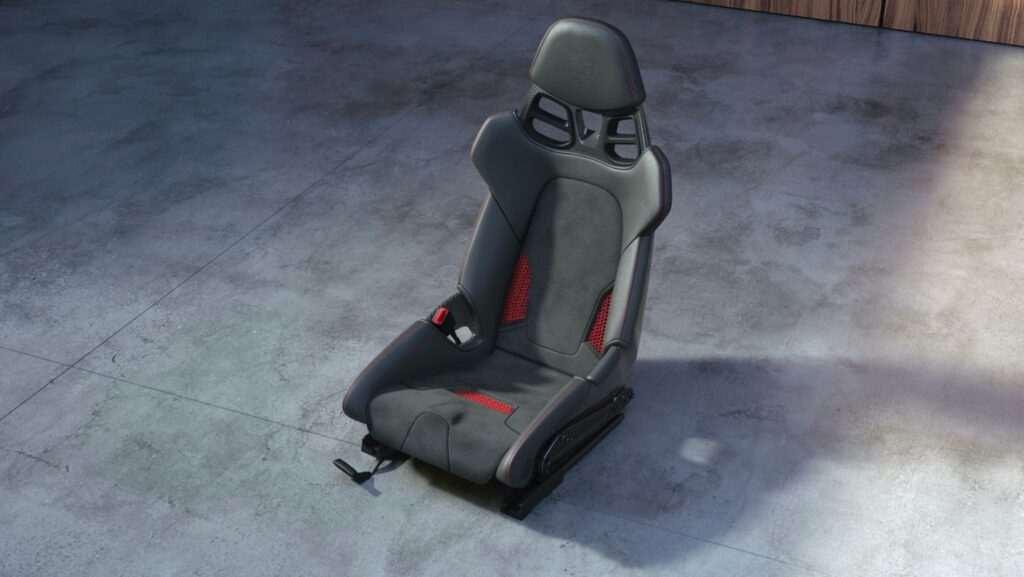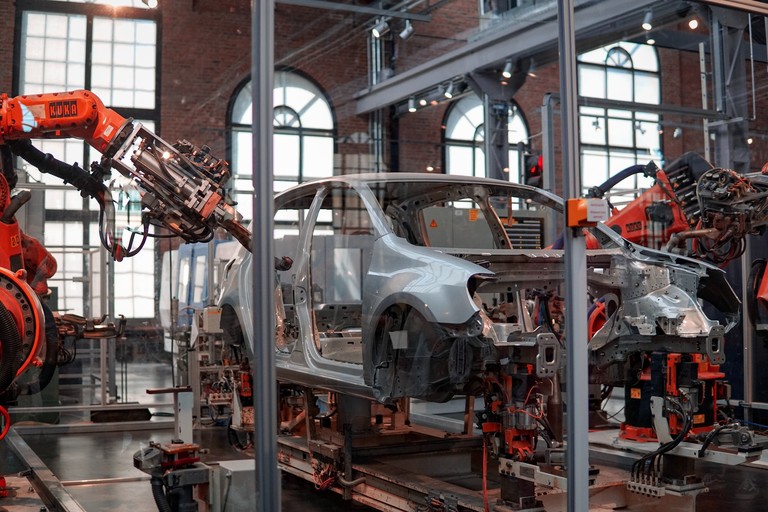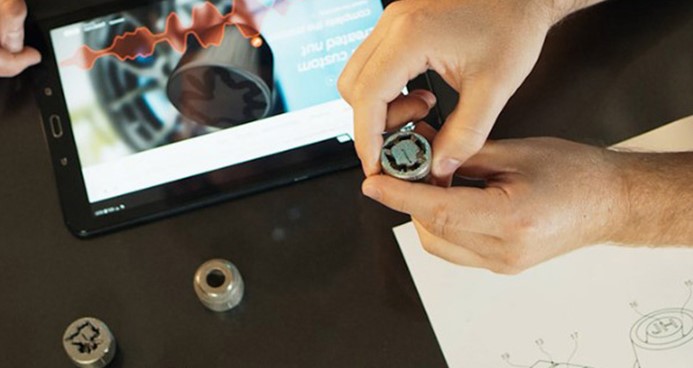
In the fast-paced world of the automotive industry, the race is on to deliver cutting-edge and well-manufactured vehicles. Luckily, one game-changing technology is stepping up to the plate: 3D printing.
Multiple facets of the automotive business have been impacted by 3D printing. Beyond its conventional usage in quick prototyping, this ground-breaking technology is now forging new ground by producing tools and even end-use components.
Let’s look at how vehicle manufacturers are utilizing this technology to enhance their production methods:

Porsche: 3D Printed Seats
Porsche recently revealed a groundbreaking sports vehicle seating concept that utilizes 3D printing and lattice architecture. The new seats have central seat and backrest cushion components made from polyurethane, which are 3D printed in three distinct firmness levels: hard, medium, and soft.
The German carmaker draws inspiration from the motorsport industry with its tailored driver-specific seat fitting.
In the future, Porsche plans to offer more seat personalization options than just color and stiffness by tailoring each seat to a customer’s unique body shape. Currently, the only technology that can support this degree of personalization is 3D printing.
Rolls Royce: 3D Printed Brackets
Rolls Royce achieved great cost savings, increased production speeds, and improved designs using additive manufacturing to optimize their brackets.
A part typically seen as small, insignificant, and historically challenging to improve with traditional methods, Rolls Royce incorporated branding, QR codes, and identifying numbers into the parts, making them unique and adaptable.
Realizing subtractive methods could not compete with the same results; additive manufacturing became a go-to in the company’s manufacturing process.
Learn more about 3D printing complex bracketry here.
Ford: 3D-Printed Prototypes & Production Parts
Creating custom tools quickly and at a reduced cost is one of the most recognized benefits of additive manufacturing. Ford Motor Company has realized this with tens of thousands of parts produced annually via 3D printing, both for prototyping needs as well as production.
Using 3D printing, the engineering team at Ford created and tested designs for the Shelby Mustang GT500, including a front splitter wicker (used to direct air up and around the exposed rotating tire/wheel to avoid producing additional vortices down the side of the car) and two 3D printed brake bracket parts. The F-150 Raptor also features an instrument panel spotlight switch blanking plug with logo.
Other applications Ford encountered where the use of additive manufacturing was a game-changer include a $70 transmission input shaft O-ring sleeve tool, that with traditional machined methods cost nearly $900 to produce. Also, a new transmission case assembly grip that allows use of the existing assembly line and pallets is expected to save Ford $2 million.
These applications were developed at Ford’s Advanced Manufacturing Center in Michigan.

Volkswagen: 3D Printed Manufacturing Tools
Nearly a decade ago, German carmaker, Volkswagen, started a pilot program featuring desktop 3D printers. The goal was to create improved tooling via their Portugal plant.
As early adopters, Volkswagen found success and soon used 3D printing in nearly all of its tooling production. Producing tooling in-house reduced costs for Volkswagen by 90%, also cutting lead times from weeks to days.
A tool like a liftgate badge typically took 35 days to develop at approximately $400 using traditional manufacturing methods. The same tool produced with additive manufacturing could be achieved in four days at just $10.
The additive method is said to have saved Volkswagen close to $350,000 in 2017 and much more in subsequent years, all the while improving things like operator satisfaction, ergonomics, and productivity.
See how other companies are 3D printing tooling to increase output on their manufacturing floor here.

Ford: 3D Printed Theft-Resistant Lug Nuts
Recently, Ford’s Europe group started a program to 3D print custom locking wheel lug nuts for cars, making them more theft-resistant.
Typically, a car will have a single locking lug nut for each wheel to prevent its removal without the proper key attached to the lug wrench. However, these can be circumvented. To address this, Ford is 3D printing patterns for its locks that cannot be duplicated as easily.
For created a custom pattern for each customer using a soundwave pattern from a simple sentence. This provides an added security layer, like a thumbprint.
The lock and key are then 3D printed as a single stainless-steel part, and after cutting the pieces apart and polishing them, the components can be put to work.
The design of the locks makes them virtually impossible to replicate. Evenly-spaced ribs inside the nut and indentations that widen the deeper they go make it difficult for thieves to create a wax impression without breaking the wax.
Daihatsu: 3D Printed Customized Parts
In 2016, Daihatsu, Japan’s oldest car manufacturer, launched a project for its Copen car model focused on vehicle customization.
The project would help quench customer demand for personalized experiences with the brand and allow customers to design and order custom 3D printed panels for the front and rear bumpers. Customers were afforded many options as well, including more than 15 base patterns in ten assorted colors.
3D printed with durable, UV-resistant thermoplastic, this production method allowed Daihatsu to produce personalized, one-of-a-kind designs both cost-effectively and quickly. This was not achievable with traditional manufacturing methods.
3D printing allows automakers to reduce lead times and production costs for low-volume parts because the technology eliminates the need to create individual tooling aids for each part.

Porsche: 3D Printed Spare Parts
Spare parts are yet another application of 3D printing in automotive, and one Porsche is taking full advantage of. 3D printing helps with many applications in the automotive industry, and one such application on the rise is the printing of spare parts.
The division of the German car company supplies parts for its vintage and out-of-production models and uses 3D printing to produce rare, low-volume spare parts for its older inventory. With a division of Porsche supplying parts for its vintage and out-of-production models, the company needed a solution for producing rare or low-volume spare parts for its older inventory.
Enter 3d printing.
Traditional methods of producing new tooling aids are expensive, especially in such low volumes, and the tooling needed to create them is either nonexistent or in poor condition. A developing trend in the automotive supply chain is the 3D printing of infrequently ordered or no longer manufactured parts. Mercedes-Benz Trucks, Volkswagen, and BMW all use 3D printing, enabling the carmakers to cut costs, increase operational efficiency and optimize inventory.
The Potential of 3D Printing
The automotive sector is witnessing the remarkable scalability of 3D printing. From top-tier OEMs to part suppliers, the integration of 3D printers offers benefits across the industry. Companies like Markforged are leading the way with their advanced printing technology, empowering automotive manufacturers to explore new possibilities and achieve enhanced production methods. To discover the incredible applications of 3D printing in the automotive industry, including what other companies are achieving, explore Markforged 3D printing applications here.
Contact us
You’re passionate about your business. We’re passionate about fueling your success. Reach out today, and let’s start a conversation.
Get in touch with one of our 3D printing experts: 800-454-2233
Share
Meet the Author

